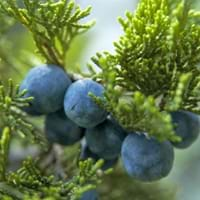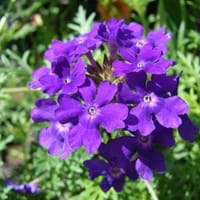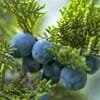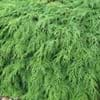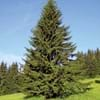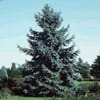Life Span
Perennial
Annual
Type
Needled or Scaled Evergreen
Flowering Plants
Origin
Hybrid origin, North America
America, Europe
Types
Not Available
Clump verbena, Moss verbena, Annual Verbena, Brazilian verbena, Sandpaper Verbana
Number of Varieties
Not Available
Habitat
Deciduous forests, Rocky areas, rocky outcrops
Forest edges, Hillside, Woods
USDA Hardiness Zone
3-7
3-9
AHS Heat Zone
7-1
Not Available
Sunset Zone
A2, A3, 1a, 1b, 2a, 2b, 3a, 3b, 4, 5, 6, 7, 8, 9, 10, 11, 12, 13, 14, 15, 16, 17, 18, 19, 20, 21, 22, 23, 24
not available
Habit
Pyramidal
Not Available
Flower Color
Brown, orange brown, Purple
Blue, Dark Purple, Light Purple, Red, White
Flower Color Modifier
Bicolor
Not Available
Fruit Color
Voilet
Not Available
Leaf Color in Spring
Blue
Dark Green
Leaf Color in Summer
Blue Green
Dark Green, Green
Leaf Color in Fall
Blue Green
Dark Green, Green
Leaf Color in Winter
Blue Green
Not Available
Leaf Shape
Scale-like imbricate
Oblovate
Plant Season
Spring, Summer, Fall, Winter
Early Spring, Late Autumn
Sunlight
Full Sun, Partial Sun
Full Sun, Partial shade
Type of Soil
Loam, Sand
Well drained
The pH of Soil
Neutral, Alkaline
Neutral, Slightly Acidic
Soil Drainage
Well drained
Average
Bloom Time
Early Spring, Mid Spring, Spring
Early Fall, Early Summer, Fall, Late Spring, Late Summer, Summer
Tolerances
Drought
Not Available
Where to Plant?
Container, Ground, Pot
Container, Ground
How to Plant?
Cuttings, Seedlings
Seedlings, Stem Planting
Plant Maintenance
Medium
Medium
Watering Requirements
Does not require water in summer, Keep the Soil well drained, Medium
Do not water frequently, Medium, Never Over-water, Requires regular watering, Requires watering in the growing season
In Summer
Lots of watering
Lots of watering
In Spring
Moderate
Moderate
In Winter
Average Water
Average Water
Soil pH
Neutral, Alkaline
Neutral, Slightly Acidic
Soil Type
Loam, Sand
Well drained
Soil Drainage Capacity
Well drained
Average
Sun Exposure
Full Sun, Partial Sun
Full Sun, Partial shade
Pruning
Remove damaged leaves, Remove dead branches, Remove dead leaves
Prune for shortening long shoots, Prune if you want to improve plant shape, Prune lower leaves, Prune regularly, Prune to control growth
Fertilizers
All-Purpose Liquid Fertilizer
All-Purpose Liquid Fertilizer
Pests and Diseases
Red blotch
Not Available
Plant Tolerance
Drought
Drought
Flower Petal Number
Single
Single
Showy Foliage
Yes
Not Available
Foliage Texture
Medium
Not Available
Foliage Sheen
Matte
Not Available
Invasive
No
Not Available
Attracts
Not Applicable
Butterflies
Allergy
Not Available
Arthritis, Asthma, Chest Pain, Itchiness, Whooping Cough
Aesthetic Uses
Bonsai, Hanging Basket, Showy Purposes, Used for decorating walls, fences, gates, hedges, etc.
Showy Purposes
Beauty Benefits
Not Available
Not Available
Environmental Uses
Air purification
Air purification
Medicinal Uses
Antirheumatic, Hemostatic, Hepatic, Skin Diseases, Skin wounds, treating tumours
Arthritis, Gallbladder Diseases, Itching, Jaundice, Joint pain, Kidney problems, Liver problems, Metabolic disorders, Sore throat, Upset stomach, Urinary tract problems
Part of Plant Used
Flowers, Leaves, Root, Stem
Flowers, Root
Other Uses
Decoration Purposes, Pesticide, Used as Ornamental plant
Air freshner, Can be made into a herbal tea, Cosmetics, Decoration Purposes, Economic Purpose, Employed in herbal medicine, Oil is used for aromatherapy, Oil is used in perfume, soaps, creams, etc., Showy Purposes, Used As Food, Used as Ornamental plant, Used for flavoring in Liquors, dairy products, gelatins,puddings, meats, candies, etc., Used for fragrance
Used As Indoor Plant
No
No
Used As Outdoor Plant
Yes
Yes
Garden Design
Feature Plant, Foundation, Hedges, Mixed Border, Rock Garden, Wall, Screening, Wind Break
Bedding Plant, Bonsai, Container, Edible, Herb
Botanical Name
Juniperus Scopulorum
Purpletop Vervain
Common Name
Rocky Mountain Juniper, Wichita Blue Juniper
Verbena
In Hindi
Wichita Blue Juniper
verbena
In German
Wichita Blue Juniper
Eisenkraut
In French
Wichita Blue Juniper
verveine
In Spanish
Wichita Blue Juniper
Verbena
In Greek
Wichita Blue Juniper
λουίζα
In Portuguese
Wichita Blue Juniper
verbena
In Polish
Wichita Blue Juniper
werbena
In Latin
Wichita Blue Juniper
Grindelia
Phylum
Pinophyta
Magnoliophyta
Class
Pinopsida
Magnoliopsida
Family
Cupressaceae
Verbenaceae
Clade
Not Available
Not Available
Tribe
Not Available
Not Available
Subfamily
Cupressoideae
Not Available
Season and Care of Wichita Blue Juniper and Verbena
Season and care of Wichita Blue Juniper and Verbena is important to know. While considering everything about Wichita Blue Juniper and Verbena Care, growing season is an essential factor. Wichita Blue Juniper season is Spring, Summer, Fall and Winter and Verbena season is Spring, Summer, Fall and Winter. The type of soil for Wichita Blue Juniper is Loam, Sand and for Verbena is Well drained while the PH of soil for Wichita Blue Juniper is Neutral, Alkaline and for Verbena is Neutral, Slightly Acidic.
Wichita Blue Juniper and Verbena Physical Information
Wichita Blue Juniper and Verbena physical information is very important for comparison. Wichita Blue Juniper height is 300.00 cm and width 180.00 cm whereas Verbena height is 6.56 cm and width 10.50 cm. The color specification of Wichita Blue Juniper and Verbena are as follows:
Wichita Blue Juniper flower color: Brown, orange brown and Purple
Wichita Blue Juniper leaf color: Blue
Verbena flower color: Blue, Dark Purple, Light Purple, Red and White
- Verbena leaf color: Dark Green
Care of Wichita Blue Juniper and Verbena
Care of Wichita Blue Juniper and Verbena include pruning, fertilizers, watering etc. Wichita Blue Juniper pruning is done Remove damaged leaves, Remove dead branches and Remove dead leaves and Verbena pruning is done Prune for shortening long shoots, Prune if you want to improve plant shape, Prune lower leaves, Prune regularly and Prune to control growth. In summer Wichita Blue Juniper needs Lots of watering and in winter, it needs Average Water. Whereas, in summer Verbena needs Lots of watering and in winter, it needs Average Water.
